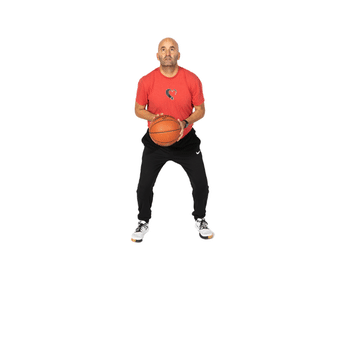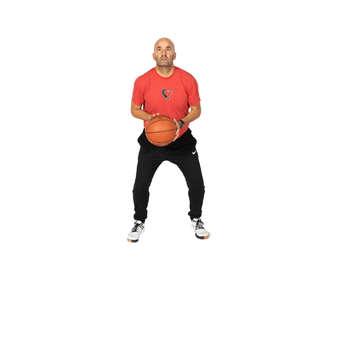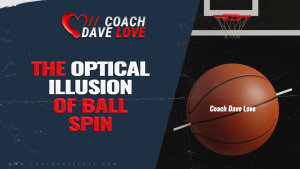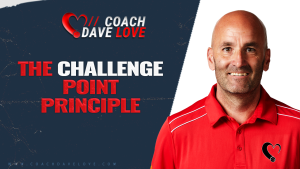Every shooter has a unique body, set of habits, limitations, and specific needs. The challenge for coaches and players alike is identifying which aspects of the shooting motion require adjustment for improvement and which elements can remain due to comfort or individual style. Beyond that, there’s a deeper question: what must change to enhance performance, and what remains simply because it feels familiar?
To address these concerns, there is one critical concept that can guide players and coaches to higher shooting consistency: the notion of Positive Power.
What Is Positive Power?
At its core, shooting a basketball is the transfer of energy. A player generates energy through body movements, which is then transferred to the ball to propel it toward the hoop. However, not all energy transfers are beneficial. In the context of shooting, Positive Power refers to energy that is directed along two primary vectors:
- Energy flowing directly toward the basket.
- Energy flowing directly upward, contributing to the arc of the shot.
These two vectors—horizontal power (toward the basket) and vertical power (upward for arc)—are critical because they align with the desired flight path of the ball: forward and upward. To develop a consistent shooting motion, players need to generate as much Positive Power as possible using various parts of their body.
What Is Negative Power?
Once we understand Positive Power, it becomes clear that Negative Power is any energy that is misdirected—energy not aligned with the optimal vectors. This occurs when parts of the body generate forces that push the ball off-line, even by as little as one or two degrees. Negative Power detracts from shot accuracy because it introduces directional variability into the shooting motion.
In coaching, the goal is to identify and reduce Negative Power. Any habitual movement that introduces lateral, backward, or inefficient upward forces can misalign the shot, causing inconsistency. Coaches must train players to minimize these forces while maximizing Positive Power.
A Complex Reality: Two Negatives Can Make a Positive
It’s important to note that, in reality, basketball shooting is not always a clean, linear process. Players can sometimes compensate for Negative Power with other forms of Negative Power, balancing two opposing forces. For example, if the guide hand pushes the ball slightly off-line in one direction, the shooting hand might push in the opposite direction, resulting in a shot that stays relatively on-target.
While this compensation is possible, it is far from ideal. Relying on two counterbalancing negatives introduces additional complexity and reduces the chances of consistency. Therefore, the emphasis should be on developing habits that align with Positive Power rather than relying on perfect synchronization of opposing forces.
Imperfections in a Dynamic Game
Basketball is an inherently dynamic sport, and perfection in form is rare. Players must navigate defensive pressure, movement, and fatigue, all of which introduce variability into the shooting motion. Eliminating Negative Power entirely is unrealistic; however, players can strive to increase the proportion of Positive Power relative to Negative Power. This incremental improvement is what leads to greater consistency over time.
Consider a comparison between elite shooters and novice players. A player like Steph Curry might generate slight amounts of Negative Power from 2-3 different body sources, but because they are minimal and well-managed, his shot remains largely accurate. Conversely, a young, inexperienced player may have dozens of sources of Negative Power, many of which are significant, leading to highly inconsistent results. The combination of inexperience, lack of focus, and unrefined habits creates a “perfect storm” of inefficiency.
Where to Begin?
For coaches and players seeking to improve shooting consistency, the first step is analysis. Video analysis is an invaluable tool for breaking down the shot from multiple angles—front, side, and behind. This provides the opportunity to study individual movements and identify which parts of the body are contributing Positive Power and which are generating Negative Power.
As you analyze the video, ask these questions:
- What direction is each body part generating energy?
- Does the energy contribute to Positive Power (toward the hoop or upward)?
- Is there a compensatory movement elsewhere that is counterbalancing Negative Power?
By identifying these patterns, you can start refining the shot and working to eliminate or minimize sources of Negative Power.
Do Great Shooters Generate Negative Power?
Observing high-level shooters during games might reveal moments where they create significant Negative Power, leading to the question: How much does Negative Power matter?
The key distinction here is understanding the difference between performance in practice and performance under pressure. While elite shooters may occasionally generate Negative Power due to defensive pressure or off-balance situations, they succeed because of their ability to compensate and maintain a degree of consistency. However, their greatest success comes when they are able to generate large amounts of Positive Power. For instance, while Steph Curry makes around 42% of his three-point shots in games, he makes approximately 70% in controlled workout settings, where he is able to optimize his Positive Power.
Conclusion: Building Positive Habits
The goal for coaches and players should be to develop habits that maximize Positive Power, while recognizing that the game will always introduce challenges and imperfections. Great shooters are not defined by perfect form, but by their ability to adapt and maintain simplicity in the most complex situations.
The focus should be on developing efficient habits, particularly those that simplify the process and generate consistent Positive Power. Coaches should encourage players to strive for simple, repeatable motions in practice so they can better handle the complexities of live game situations. While perfection is unattainable, the constant refinement of shooting form and energy generation will lead to improved consistency and accuracy over time.




